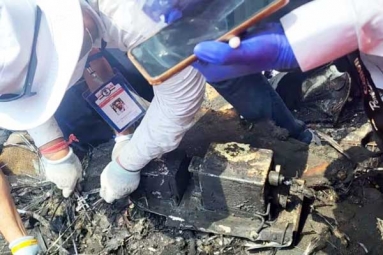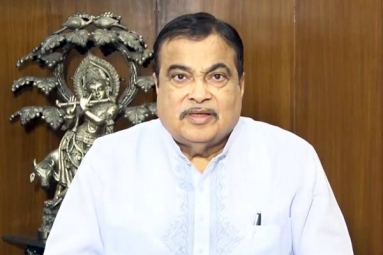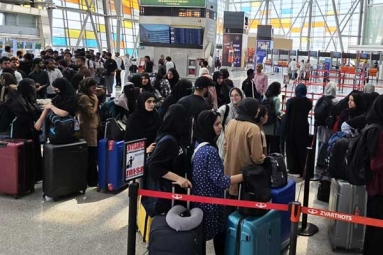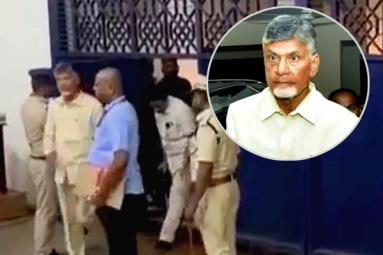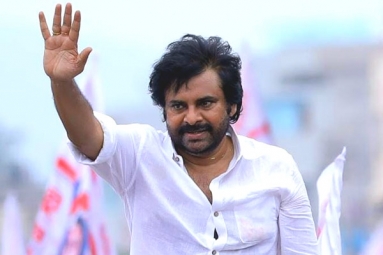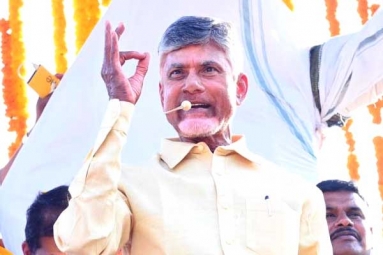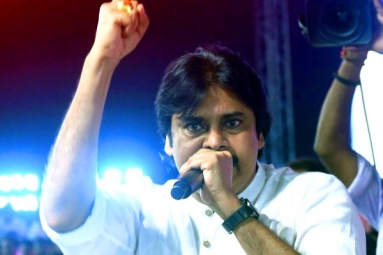
(Image source from: Chandrababu Naidu A man of records })
Telugu Desam Party (TDP) chief Nara Chandrababu Naidu took oath as first chief minister of residuary Andhra Pradesh on Sunday. He holds the distinction of serving as CM of Andhra Pradesh for the longest tenure.
From September 1, 1995 to May 13, 2004 Chandrababu was the chief minster of (united) Andhra Pradesh – a term of eight years, eight months and 13 days. Now he holds the distinction of becoming the first chief minster of (bifurcated) Andhra Pradesh.
The 64-year-old TDP chief holds the record of being the youngest MLA in AP and becoming a minister at the young age of 28. He was made the minister for cinematography in 1978, in T Anjaiah's Cabinet.
Chandrababu has been elected an MLA to the AP assembly seven times. He holds the record of being the longest-serving opposition leader in Andhra Pradesh, in between 2004 and 2014.
N Chandrababu Naidu had a humble beginning in life. He was born into a middle-class agricultural family on April 20, 1950, at Naravaripalle near the temple city of Tirupati, in Chittoor district in Andhra Pradesh.
While pursuing his Masters in Economics at Sri Venkateswara University, Chandrababu became a students' union leader. In 1975, he became a member of the Youth Congress. In 1978, young Chandrababu was contested elections from his native Chandragiri constituency and became MLA for the first time. After becoming a minister, he had to drop his PhD programme in economics.
Chandrababu came to the notice of Telugu matinee idol N T Rama Rao, after becoming a minister. NTR married off his second daughter Bhuvaneswari to Chandrababu in 1980.
Chandrababu didn't get a Congress ticket in 1983 when the Telugu Desam's wave was at a nascent stage. Within a few months he quietly joined his father-in-law's fledgling party. During the NTR government, Chandrababu was given charge of Karshaka Parishad, the farmers' council. Later he became TDP general secretary and emerged the key strategist and became the organiser of all party affairs.
In 1989, Chandrababu contested elections from Kuppam assembly constituency, which borders Karnataka and Tamil Nadu. Since then he has been representing the constituency in the state assembly.
Chandrababu held the portfolio of minister for finance and revenue in NTR's Cabinet in 1994. But in August 1995 he dethroned his father-in-law from the Chief Minister's chair by leading an internal party coup and himself became the CM, with support from majority of the party MLAs.
After NTR's death in January 1996, Chandrababu took full control of the party and also became its president. For the political coup he was tagged a "backstabber" that remained for years. After that he forayed into national politics, where he played a key role in forming the United Front government – an alliance of non-Congress and non-BJP parties.
In 1997, Chandrababu was even "offered" the Prime Minister's post, which he "rejected" saying he wants to dedicate himself to the development of his home state Andhra Pradesh.
During his long stint as chief minister of AP, Chandrababu ushered in economic reforms, along with reforms in governance. He launched pioneering initiatives like e-governance, e-Seva (government services delivered through electronic mode) and Citizens Charter.
Chandrababu launched the Vision-2020 policy document, which envisaged an all-round development of the state and also implemented it vigourously. However, Vision-2020 was critisised for neglecting rural development.
Hyderabad, which was known for its pearls and biryani, became an Information Technology hub because of Chandrababu's vision. His development efforts attracted giants like Microsoft, Google, Wipro, and other IT majors to the city.
Chandrababu, known to be a workaholic and a hard taskmaster, was popular as the Chief Executive Officer of Andhra Pradesh rather than its chief minister. He administration of the state won international recognition. He was even listed in the "dream team" of the World Economic Forum, which he attended regularly.
The exit of K Chandrasekhar Rao, who launched the Telangana Rashtra Samiti and demanded bifurcation of the state, from the TDP also affected his political trajectory. Eventually, Chandrababu gave in to the demand for a separate state.
Chandrababu could have come back to power in 2009, but Chiranjeevi's Praja Rajyam Party divided the anti-incumbency votes and Y S Rajasekhara Reddy was voted back to power. This made Chandrababu the leader of the opposition for a second successive term.
The TDP chief was on the verge of political extinction in 2014, with the entry of YSR Congress led by Jaganmohan Reddy, son of Y S Rajasekhara Reddy, into state politics.
At this junction the bifurcation of Andhra Pradesh was a blessing in disguise for Chandrababu. People voted him to power as he was seen as an "experienced" leader who could develop the new state of AP.
(AW: Pratima Tigga)






